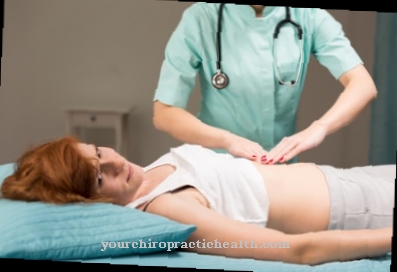The Phoniatrics forms its own medical specialty, which was a branch of ear, nose and throat medicine (ENT) until 1993. Phoniatrics deals with the topics of hearing, voice and language disorders as well as swallowing difficulties and has a strong interdisciplinary character.
Together with pediatric audiology, which primarily deals with problems in children's voice and language development and hearing perception, phoniatrics establishes an independent specialist field in Germany and Europe.
What is phoniatrics?

The medical specialty of phoniatrics is based around the topics of hearing problems, disorders of voice and speech and disorders of swallowing. Phoniatrics is strongly interdisciplinary because it is not only about medical-physiological problems, but sometimes also about non-medical problems. Therefore, other medical and non-medical specialties such as neurology, psychiatry, geriatrics, orthodontics, speech therapy and a few others are also included.
In Germany, phoniatrics, together with pediatric audiology, which deals with the corresponding developmental and perceptual disorders in children, form an independent specialist focus, which was renamed in 2004 from specialist in phoniatrics and pediatric audiology to specialist in speech, voice and children's hearing disorders.
The additional specialist medical training includes a 2-year basic training in the field of ear, nose and throat medicine and a 3-year specialist training in the fields of voice and language disorders and the field of children's hearing disorders. The origins of the medical specialization in phoniatry go to Hermann Gutzmann senior. back, who used the topic of language disorders in his habilitation thesis in 1905.
Treatments & therapies
Diseases and symptoms that can be diagnosed and treated in phoniatrics are typically associated with disorders of the voice, speech, and fluency of speech (stuttering) or with swallowing disorders or hearing problems. It does not matter whether the problems are of medical-physiological origin, e.g. B. due to an injury, an operation or an illness or whether the problems are based on socio-psychological circumstances.
This also illustrates the holistic, interdisciplinary approach of phoniatrics, which is also shown in the treatment of voice disorders that can occur due to organic causes or are functional, such as overload or, in rare cases, shock. Speech and language disorders (dysarthria and aphasia) in adults can arise due to voice disorders, but are mostly based on neurological problems caused by the failure of certain brain areas after a stroke or due to a brain tumor. Disturbances in the flow of speech such as stuttering are also a clinical picture that falls into the treatment spectrum of phoniatrics.
The swallowing process, which is also the subject of phoniatrics, includes the ingestion, crushing and transport of solid or liquid food and saliva from the mouth to the stomach, the transport through the esophagus being involuntary by corresponding peristaltic movements of the esophagus. In addition to organic problems, there are a number of reasons why swallowing disorders (dysphagia) can occur and require careful diagnosis and therapy.
Hearing disorders in adulthood can also have a variety of other causes in addition to organic changes due to injury, surgery or age-related reasons and therefore also fall into the treatment spectrum of phoniatrics. A special treatment area with great challenges is voice reassignment during gender reassignment, in order to adapt the voice of the converted women or men to their new gender as a woman or man.
Diagnosis & examination methods
Hearing disorders in adults usually manifest themselves symptomatically as hearing loss. The causes can be very diverse and cover a broad spectrum, ranging from simple closure of the external auditory canal with ear wax, ossification in the middle ear or damage to the eardrum to the conversion of sound into nerve impulses in the inner ear or problems with the processing of nerve impulses in the brain. In addition to otoscopy, several subjective and objective audiometric methods are available for diagnosis, with which the causes of the hearing problems can be localized.
If there is a suspicion of a voice disorder and a carefully carried out anamnesis in order to be able to rule out certain causes for the possible voice disorder based on the preconditions and the course of the complaints. Other diagnostic procedures such as electromyography (EMG) of the larynx muscles and / or electroglottography can follow in order to detect or rule out organic problems. Electroglottography is a non-invasive procedure that records the function of the two vocal folds, i.e. their vibration cycle, in an electroglottogram and allows conclusions to be drawn about the functionality of both vocal folds.
Further diagnoses such as magnetic resonance imaging from the head to the upper chest can provide information about any infections that may be present and the integrity of the larynx nerve. Therapy options are, depending on the diagnosis, speech therapy treatments, which can also be supplemented by speech therapy devices that the patient can use at home with ongoing success monitoring. In some cases, various surgical treatment methods (phonosurgery) are also available. In the case of spasmodic dysphonia, in which the vocal folds largely lose their function due to muscle spasms, the injection of botulinum toxin into the larynx can help at least for some time.
For voice and language disorders with no apparent organic cause, there are a number of speech therapy voice therapies that include voice generation, breathing, articulation and the personality of the patient. In many cases, stimulation current therapy in the larynx area can accompany the therapy and promote and shorten the success of the treatment. In the case of swallowing problems, the fiberendoscopic swallowing examination (FEES) is often used as a diagnostic method in order to be able to visually assess the swallowing process with a flexible lens that is inserted through the nose. The therapies available are logopedic swallowing therapy or, in the case of localizable organic damage, appropriate surgical measures.













.jpg)

.jpg)
.jpg)











.jpg)